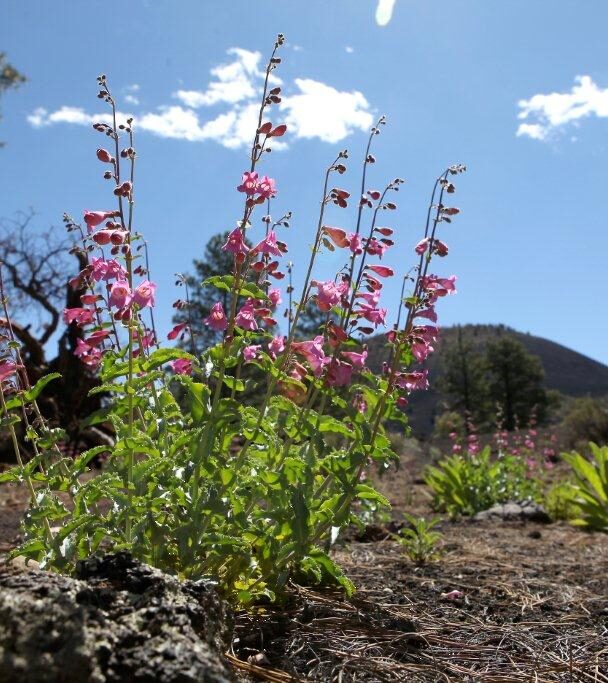Wildflowers in bloom are northern Arizona's reward for surviving one of the snowiest winters on record. But one striking hot pink flower growing in one of the harshest environments around has botanists bursting with questions.
The hot pink penstemon clutei (pronounced CLUE-tee-eye), also known as the Sunset Crater Beardtongue, has caught the attention of bees, hummingbirds and plant ecologists such as Judy Springer of the Ecological Restoration Institute at Northern Arizona University.
"We're interested in doing research on this plant in particular because it only grows here. On the entire planet, the area around Sunset Crater is the only place you'll find it in the wild."
A rare find indeed, this penstemon is a striking contrast among the black cinders of a thousand-year-old volcanic eruption.
"The volcanic soils act as a mulch," said Springer. "There are cinders on top and then, if you go down a little bit, you'll come to a silty layer where the moisture resides."
But the competition for moisture in the cinders is fierce.
"We have found that this particular plant is severely impacted by competition," said ERI ecologist Doc Smith. "The large number of ponderosa pine trees that have encroached on this site have affected the beardtongue and its ability to thrive."
ERI researchers say the pine forests of the West are unnaturally crowded with thickets of trees because of changes to the landscape since pioneers moved in. Overgrazing by early settlers removed the grasses that once carried frequent, low-intensity wildfires along the forest floor. This, along with fire suppression policies, allowed many small trees to become established and choke out wildflowers like the penstemon clutei.
But competition from other plants is not this flower's only threat. It also seems to be a tasty treat for a number of wildlife species.
"On a lot of these flowering stems you can see they have been nipped off, probably by deer, elk or rabbits," said Springer.
How the Sunset Crater Beardtongue continues to thrive, how it got here and how it reproduces are questions researchers at the ERI are hoping to answer as they study the effects of a changing forest on a pretty plant, answers that may keep a rare and vibrant bloom from permanently fading into the sunset near Sunset Crater.
Bonnie Stevens is the Ecological Restoration Institute at Northern Arizona University program director for public education and information.
Link to The AZ Daily Sun Story Here

